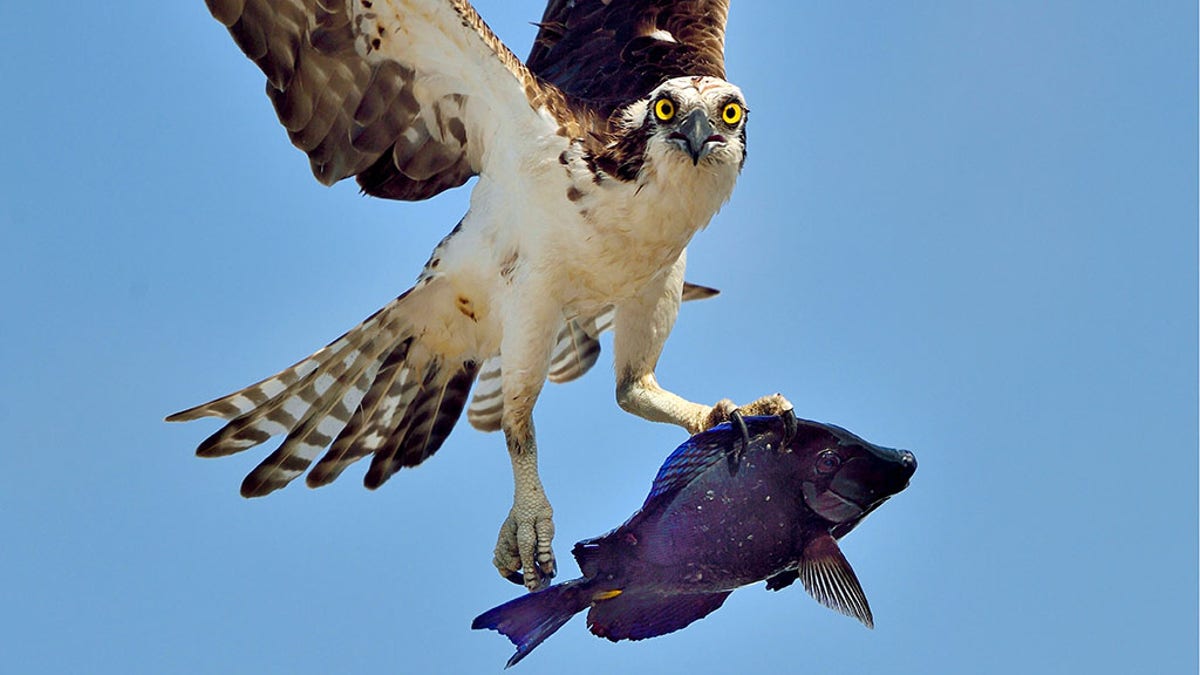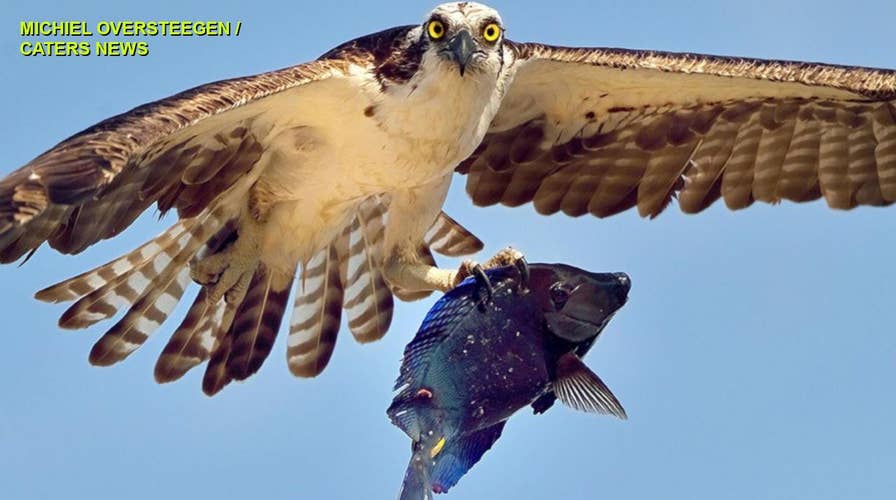A vibrant bluefish was carried off to its presumable demise by a powerful osprey, its giant talons gripped the pancake-shaped sea creature as the bird’s golden-yellow eyes pierced the camera.
Photographer and bird watcher Michiel Oversteegen, 50, captured the incredible shot near Arashi Beach, Aruba, in late January.
'MOST VENOMOUS' FISH IN WORLD DISCOVERED IN POPULAR SWIMMING SPOT PROMPTS WARNING FROM BEACHGOER
“While driving along the shoreline I noticed the osprey making a splash in the ocean. I quickly parked my car and grabbed my camera,” Oversteegen, who is originally from the Netherlands but now resides on the island, told Fox News on Tuesday.
"While flying over, the raptor looked me straight in the eyes as if it wanted to show me its just obtained trophy."
"The moment I stepped outside, the osprey flew over and he was still struggling with the non-cooperating fish,” he added, noting this was the first time he’d ever seen this bird-of-prey species with a coral reef fish in its talons.
A couple days later, Oversteegen saw another Osprey doing the same -- but this time holding a "smaller specimen of the Caribbean blue tang, a distant cousin of the famous 'Dory,'" he said, referring to the character in Disney's "Finding Nemo."

The fish was likely a blue tang. (Michiel Oversteegen/Caters News Agency)
Oversteegen also posted the photo to Facebook, noting the fish was likely a Caribbean blue tang, also known as a blue tang, blue tang surgeonfish, or a blue doctorfish.
"An Osprey caught a pretty large Caribbean Blue Tang. While flying over, the raptor looked me straight in the eyes as if it wanted to show me its just obtained trophy," he wrote in part.
The fish isn’t usually eaten by humans — it has a strong odor and has been known to cause ciguatera poisoning, or an “illness caused by eating fish that contain toxins produced by a marine microalgae called Gambierdiscus toxicus,” according to the Centers for Disease Control and Prevention (CDC). But the osprey was undeterred.
Blue tangs live in coral reefs and sleep in small crevices and nooks at night to protect themselves against predators, according to the Florida Museum. This species of fish go through three color phases, first a bright yellow during its juvenile years before changing to a “mixture of yellow and blue,” during its time as an adolescent. Finally, as adults, blue tangs sport a “deep blue to purplish-blue with a yellow caudal spine,” according to the museum.
ANCIENT SHARK'S ‘SCISSOR JAWS’ RECREATED BY RESEARCHERS UNRAVEL MAJOR MYSTERIES OF 'WEIRD' CREATURE
Blue tangs typically reach 12 inches in length and can be found off the coast of South America, among other places.
"I never expected so [many] reactions and comments," Oversteegen said of the attention his photos of the osprey have received.
"It [went] viral on social media and now shows in newspapers all over the world," he added. "That certainly puts a smile on the photographer's face."

